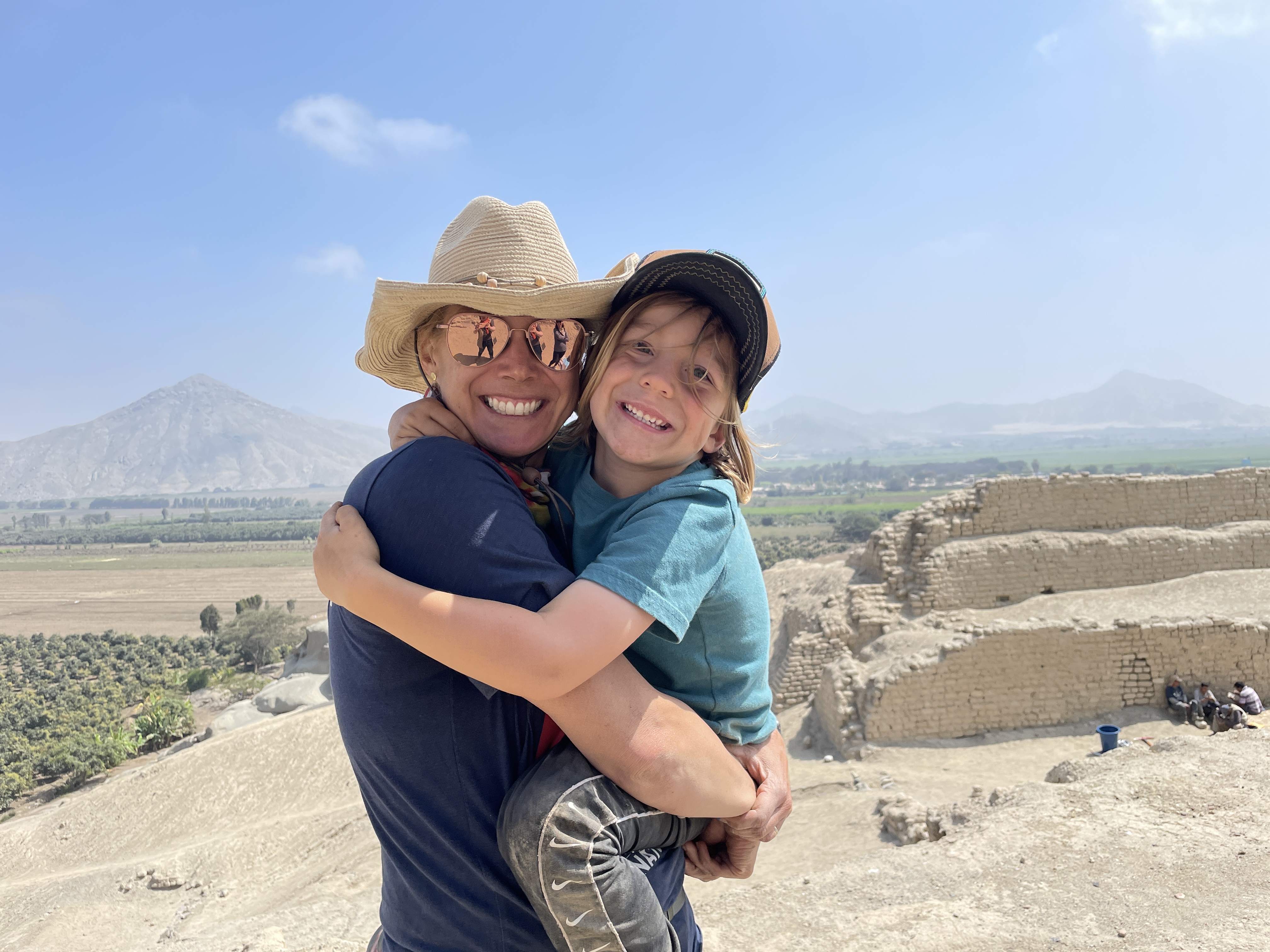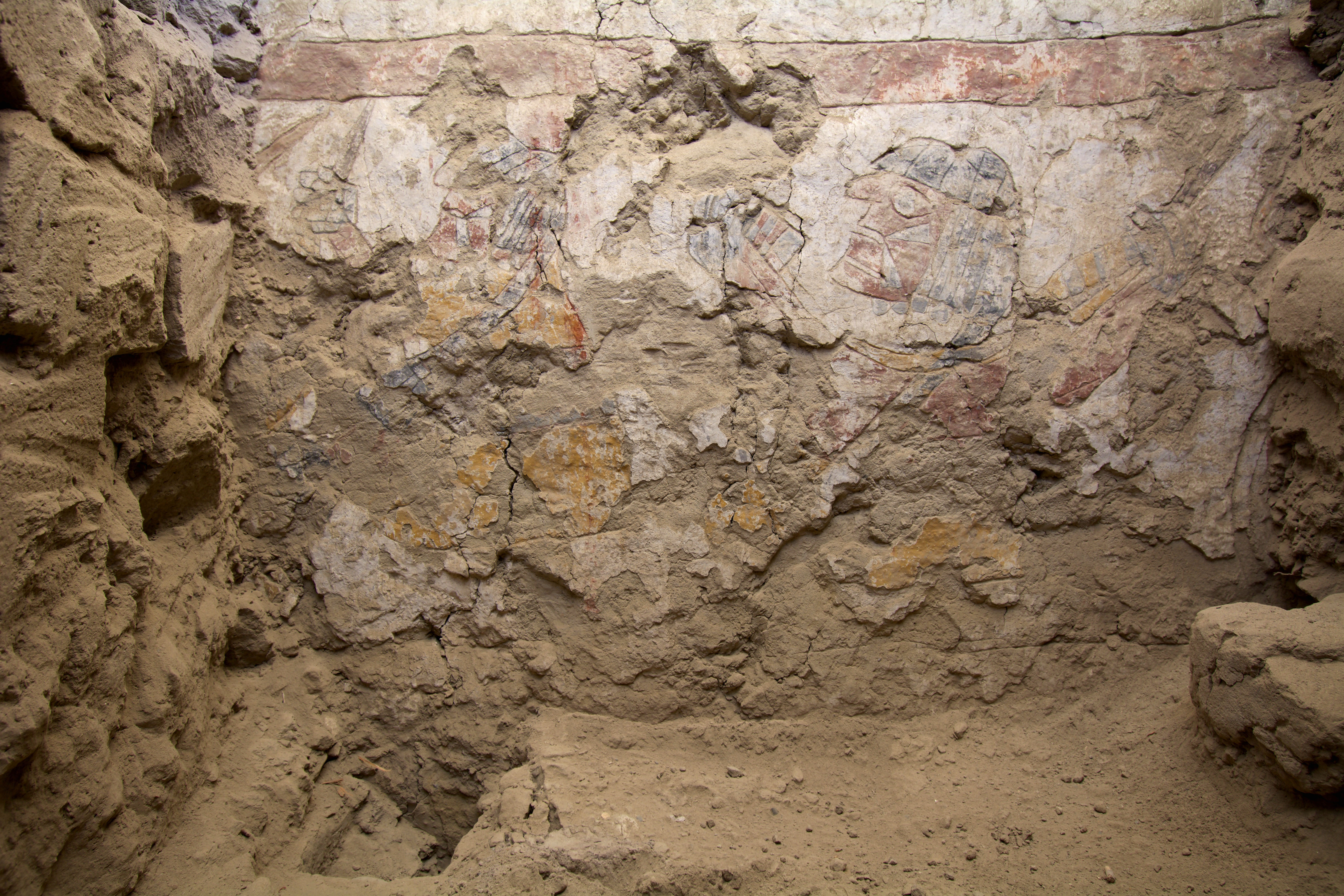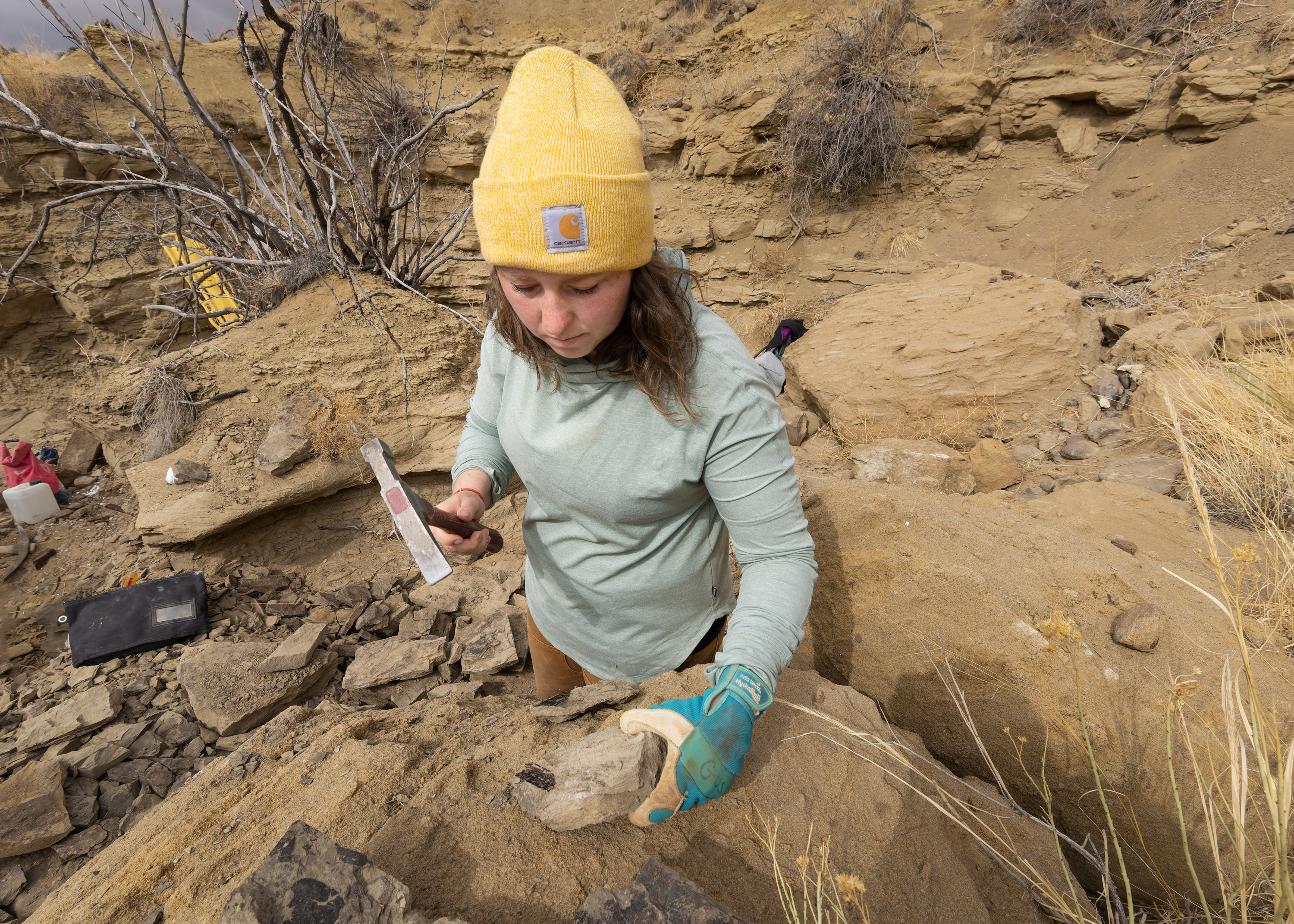
The Denver Museum of Nature & Science is thrilled celebrate three trailblazing women in science, starting with Dr. Michele Koons and Dr. Gussie Maccracken. These energetic scientists come armed with a vast array of skills and a strong desire to impart their knowledge to others. As we celebrate their contribution and growth, we also take a moment to honor the inspiring achievements of Dr. Paula Cushing, a shining star and the longest serving scientist at the Museum, who has made a lasting impact in her field. The Museum is dedicated to promoting and supporting the next generation of women in science and is proud to have these talented individuals on board, paving the way for a brighter, more diverse and inclusive future in STEM.
Dr. Koons not only brings her years of experience and passion for archaeology to the Denver Museum of Nature & Science, but she has also made significant contributions to the Museum. As a Curator of Archaeology, she is responsible for curating the Museum's archaeological collections from Latin America, North America, and Egypt, ensuring that these artifacts are properly cared for and preserved for future generations to learn from and enjoy. Her educational background includes degrees from the University of Pittsburgh, the University of Denver and Harvard University.
Read more: Michele Koons, PhD

Archaeologist Michele Koons and her son, Sullivan, at Pañamarca, Peru. (Photo/ Lisa Trever)
Dr. Koons specializes in ancient political dynamics and social networks in the Andes of South America and the Southwest US. She is also passionate about public archaeology and has directed local projects at the Magic Mountain site and the Astor House, both in Golden, to engage the Denver Metro communities in the human history of our own backyard. Michele also has expertise in radiocarbon dating, ceramic analysis, and using geophysical techniques to guide archaeological research.
Dr. Koons has conducted research in various countries such as the United States, Peru, Bolivia, Chile, France and China. Michele is currently directing two projects on the north coast of Peru, both investigating the Moche culture who lived there from 300-850 CE. The first project is in the Alto Piura region in the far north of the country, close the Ecuador boarder. Here, she and her team are researching the northern extreme of Moche cultural influence. No work has been conducted on this topic in the region since the 1980s so there is much to do. Her team’s work began in 2022 and to date has included geophysical and pedestrian surveys and drone mapping; excavations are planned for the future.
The second project is on the southern monumental frontier of the Moche sphere of influence at the site of Pañamarca. Here she is part of a team of archaeologists, art historians, and conservators working to better understand the Moche presence at the site, as well as the overall cultural chronology and past use and development of the surrounding landscape.
Read more: Pañamarca: Unearthing Ancient Peruvian History / Unearthing Ancient Peruvian History

Two seated women display colorful threads and spinning or weaving tools at Pañamarca. (Photo/ Lisa Trever)
Pañamarca is an impressive site that sits on a prominent rock outcrop in the Nepeña Valley. It contains several structures including stepped adobe platforms, a massive walled plaza and several smaller structures. The standout feature of Pañamarca, however, are the elaborate multicolored Moche murals that adorn the earthen walls throughout the site, which her team is uncovering, conserving, and documenting. Together, these two projects aim to understand how Moche material culture is manifest at the extremes of its geographic influence. Dr. Koons’ overall goal is to further elucidate the understanding of Moche politics across space and time.
While Dr. Koons brings years of experience and contribution as a seasoned archeologist to the Museum, Dr. Gussie Maccracken brings her expertise as a thriving expert in the field of paleobotany. After years of climbing and growing within the Museum, Dr. Maccracken has now taken on the new role of Curator of Paleobotany, solidifying her place as a valuable member of the Museum's team.
Read more: Meet Gussie Maccracken, the New Curator of Paleobotany
Dr. Maccracken is a paleobotanist with a broad knowledge of different plant and insect groups, and a deep interest in the evolution of plants, herbivorous insects and their interactions in the fossil record. Before assuming the role of curator, Dr. Maccracken was a National Science Foundation Postdoctoral fellow specializing in plant-insect ecological interactions throughout the Cretaceous-Paleogene mass extinction. She received her bachelor's degree in biology from Colorado College and her PhD from the Department of Entomology at the University of Maryland, College Park.
Dr. MacCracken studies the evolution of plants using fossil records. Her research focuses on examining how ancient plants shaped past environments and the interactions between plants and animals, such as the mammals and insects that consumed these plants. To conduct her research, Dr. MacCracken begins by finding and excavating plant fossils from the ground, transporting them to a museum for preservation and then collecting data on them. The focus of her research is the Age of the Dinosaurs, also referred to as the Cretaceous and the immediate aftermath of the extinction of the dinosaurs 66 million years ago.
"My favorite memory from the field is from a field trip in 2012 where we found 76-million-year-old leaves from the Kaiparowits Formation, Grand Staircase-Escalante National Monument, Utah," says Dr. Maccracken. "Between finding spectacular fossil leaves and the breathtaking views, I knew at that moment that I wanted to do this for the rest of my life."

Gussie Maccracken excavating at Corral Bluffs in Colorado Springs, Colorado. (Photo/ Rick Wicker)
Dr. Maccracken is excited to begin her work at the Museum and is currently working on two major research projects: the Corral Bluffs in Colorado Springs and the Laramidia Project in western North America. Her expertise is in fossil plants, and she is passionate about using paleontology to understand the impacts of human activities on the planet by studying how the Earth has changed through time.
As the Denver Museum of Nature & Science continues to expand and grow, it also values its long-standing members of the team who bring a wealth of knowledge and experience to the table. One of these valuable team members and shining stars is none other than Dr. Paula Cushing, PhD, who holds the title of the longest-term museum scientist at the Museum. With her extensive experience in arachnids, Dr. Cushing has dedicated her career to furthering our understanding of these fascinating creatures.
Dr. Cushing, PhD, is the Senior Curator of Invertebrate Zoology. As an expert in the evolutionary biology and ecology of arachnids, Dr. Cushing has made a significant impact on the field through her extensive research and dedication to science outreach.
Read more: Paula E. Cushing, PhD
The path to scientific exploration for Dr. Cushing began during her youthful years. "Ever since I was a little girl, I wanted to study how life evolved on this planet," shares Dr. Cushing.
Her interest was further nurtured through a high school internship at the insect zoo at the Smithsonian Institution’s National Museum of Natural History and volunteer work as a naturalist at a park near her childhood home in Virginia. As an undergraduate student in the Biology Department at Virginia Tech, Dr. Cushing started volunteering in the lab of a biology professor, Dr. Brent Opell, who was also an arachnologist. It was then that Dr. Cushing found her niche in the fascinating world of arachnids.
"Arachnids are enormously diverse," she explains, "there are well over 100,000 species of arachnids in the world, yet there are only about 500-600 professional arachnologists doing research on these organisms. I knew that working as an evolutionary biologist in arachnology, I would never run short of interesting questions about these organisms."
As a Senior Curator of Invertebrate Zoology, Dr. Cushing's day-to-day job is far from routine. From re-curating specimens and carrying out specimen identification to advising graduate students and conducting science outreach programs, her work is a testament to her passion for arachnids and her commitment to sharing that passion with others. One of her favorite programs is the "Colorado Spider Survey," a citizen science project that encourages people interested in natural history to study and collect arachnids from around the state.
Dr. Cushing is an invaluable member of the Denver Museum of Nature & Science team, where she is known for her passion for research and her endless pursuit of interesting questions about the natural world. She has a strong love for the organisms that make up the world and is always eager to understand their evolution.
For aspiring young scientists, Dr. Cushing's advice is simple: be curious, remain curious and follow your passions. As a highly respected and accomplished scientist, Dr. Cushing is a true inspiration and role model for those looking to make their mark in the field.
The Museum stands tall in its commitment to diversity and inclusiveness in STEM fields and is honored to showcase the inspiring stories of female scientists like Dr. Cushing, Dr. Maccracken and Dr. Koons. It serves as a beacon of hope for the new generation of women in science, fostering their passions and dreams and providing them with the opportunities to excel. The Museum's unwavering dedication to education, especially from an early age, is a testament to its commitment for a brighter and more inclusive future, where women in science are celebrated and empowered to make a positive impact on the world.
